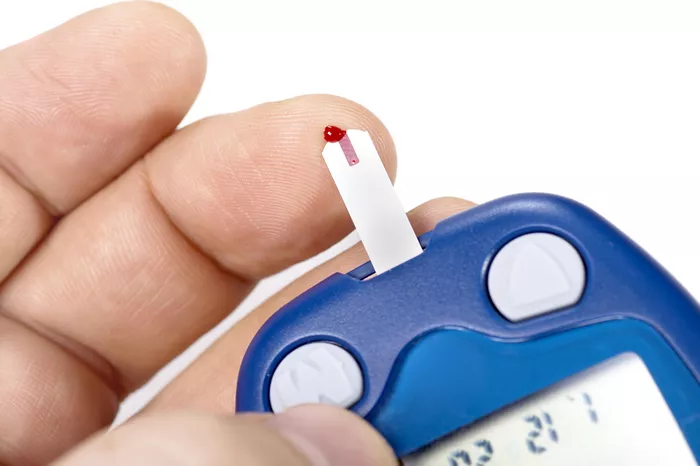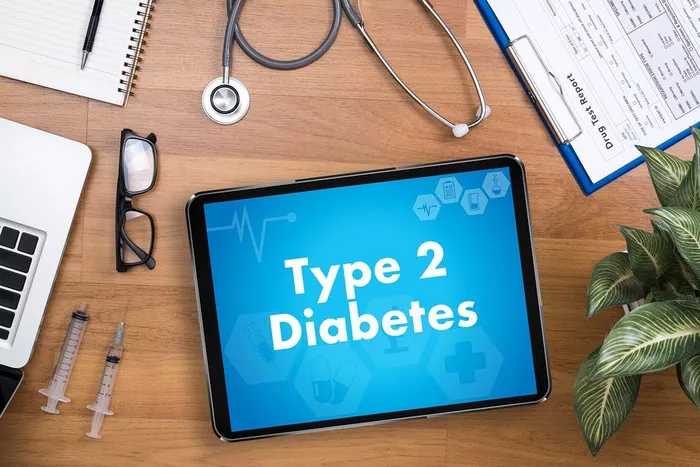Diabetes mellitus, commonly referred to as diabetes, is a chronic condition that affects how the body processes blood glucose (sugar). With over 400 million people affected globally, diabetes management has become a critical area of medical science and technology. Central to this management is the glucose monitor, a device designed to measure the concentration of glucose in the blood. Understanding the role, functionality, and types of glucose monitors is essential for both healthcare professionals and patients. This article delves into the specifics of glucose monitors, exploring their importance, types, advancements, and practical use in managing diabetes.
What is a Glucose Monitor?
A glucose monitor, also known as a blood glucose meter (BGM), is a medical device used to determine the approximate concentration of glucose in the blood. It plays a crucial role in managing diabetes by helping individuals maintain their blood sugar levels within the target range. The device provides immediate feedback on blood glucose levels, which is vital for making informed decisions about diet, exercise, and medication.
Types of Glucose Monitors
There are several types of glucose monitors available, each with unique features and mechanisms. The primary types include:
- Self-Monitoring Blood Glucose (SMBG) Devices
- Continuous Glucose Monitors (CGMs)
- Non-Invasive Glucose Monitors
1. Self-Monitoring Blood Glucose (SMBG) Devices
Overview
SMBG devices are the most commonly used glucose monitors. They require a small blood sample, usually obtained by pricking the fingertip with a lancet. The blood sample is then placed on a test strip, which the monitor reads to determine the blood glucose level.
Components
- Lancet: A small, sharp needle used to prick the skin to obtain a blood sample.
- Test Strip: A disposable strip that reacts with glucose in the blood sample.
- Meter: The device that reads the test strip and displays the blood glucose level.
Advantages
- Ease of Use: Simple and quick to use, making them suitable for daily monitoring.
- Accuracy: Provides reliable results when used correctly.
- Affordability: Generally more affordable compared to other types of glucose monitors.
Limitations
- Invasiveness: Requires finger pricking, which can be uncomfortable and lead to callous formation over time.
- Spot Measurements: Provides glucose readings at specific points in time, which may not capture fluctuations throughout the day.
2. Continuous Glucose Monitors (CGMs)
Overview
CGMs are advanced glucose monitoring systems that provide real-time glucose readings throughout the day and night. A small sensor is inserted under the skin, usually on the abdomen or arm, to measure interstitial glucose levels continuously.
Components
- Sensor: A tiny electrode inserted under the skin to measure glucose levels in the interstitial fluid.
- Transmitter: Attached to the sensor, it sends glucose data wirelessly to a receiver or smartphone.
- Receiver/Smartphone App: Displays the glucose readings and trends, and can alert the user to high or low glucose levels.
Advantages
- Continuous Monitoring: Provides real-time data, allowing for better management of glucose levels.
- Trend Analysis: Helps identify patterns and trends in glucose levels, improving long-term diabetes management.
- Alerts and Alarms: Notifies the user of hypo- or hyperglycemia, enabling prompt action.
Limitations
- Cost: Generally more expensive than SMBG devices.
- Calibration: Some models require regular calibration with finger-stick blood glucose readings.
- Sensor Lifespan: Sensors need to be replaced every 7-14 days, depending on the model.
3. Non-Invasive Glucose Monitors
Overview
Non-invasive glucose monitors aim to measure blood glucose levels without requiring a blood sample. These devices use various technologies, such as spectroscopy, to estimate glucose levels through the skin.
Types of Non-Invasive Monitors
- Optical Glucose Monitors: Use light to measure glucose levels through the skin.
- Electromagnetic Glucose Monitors: Utilize electromagnetic waves to detect glucose concentrations.
- Biochemical Glucose Monitors: Use biochemical reactions on the skin surface to estimate glucose levels.
Advantages
- Comfort: Eliminates the need for finger pricks, enhancing user comfort.
- Convenience: Easier to use, especially for individuals with needle phobia or skin issues.
Limitations
- Accuracy: Currently, non-invasive monitors may not be as accurate as invasive methods.
- Technology Limitations: Still under development, with many devices not yet commercially available.
How Glucose Monitors Work
Understanding the mechanisms behind glucose monitors is key to appreciating their functionality and importance.
Mechanism of SMBG Devices
SMBG devices rely on enzymatic reactions to measure glucose levels. The test strip contains enzymes such as glucose oxidase or glucose dehydrogenase. When the blood sample is applied to the strip, the glucose in the blood reacts with the enzyme, producing an electrical current proportional to the glucose concentration. The meter then measures this current and displays the corresponding glucose level.
Mechanism of CGMs
CGMs measure glucose levels in the interstitial fluid rather than blood. The sensor contains an enzyme that reacts with glucose, producing a small electrical signal. This signal is transmitted to the receiver or smartphone, where it is processed to provide continuous glucose readings. The readings are updated at regular intervals, typically every 5 minutes, providing a detailed profile of glucose fluctuations throughout the day.
Mechanism of Non-Invasive Monitors
Non-invasive monitors use various methods to estimate glucose levels without drawing blood. For example, optical glucose monitors shine a light through the skin and analyze the reflected light to determine glucose concentration. Different wavelengths of light interact with glucose molecules in specific ways, allowing the device to estimate the glucose level based on the light absorption pattern.
Importance of Glucose Monitoring
Effective glucose monitoring is critical for managing diabetes and preventing complications. Consistent monitoring allows individuals to:
- Maintain Target Glucose Levels: Keeping glucose levels within the target range reduces the risk of diabetes-related complications such as cardiovascular disease, neuropathy, and retinopathy.
- Make Informed Decisions: Real-time glucose data helps individuals make informed decisions about their diet, physical activity, and medication.
- Detect Hypoglycemia and Hyperglycemia: Early detection of low or high blood sugar levels enables prompt corrective action, preventing severe consequences.
- Track Long-Term Trends: Monitoring trends over time helps in adjusting treatment plans and improving overall diabetes management.
Advances in Glucose Monitoring Technology
The field of glucose monitoring has seen significant advancements over the years, enhancing the accuracy, convenience, and user experience.
Flash Glucose Monitoring (FGM)
Flash Glucose Monitoring is a newer technology similar to CGM but with some key differences. An FGM system consists of a sensor worn on the skin and a reader device. The user scans the sensor with the reader to obtain glucose readings. FGMs provide continuous glucose data without the need for calibration, and the sensor typically lasts for 14 days.
Integration with Insulin Pumps
Many modern glucose monitors can be integrated with insulin pumps, creating a closed-loop system often referred to as an artificial pancreas. This system continuously monitors glucose levels and automatically adjusts insulin delivery, providing better glucose control and reducing the burden of diabetes management.
Mobile Connectivity and Apps
The integration of glucose monitors with smartphones and mobile apps has revolutionized diabetes management. These apps allow users to track their glucose levels, analyze trends, and share data with healthcare providers. Features such as cloud storage and remote monitoring enable more comprehensive diabetes care.
Wearable Technology
The development of wearable technology has led to the creation of more discreet and comfortable glucose monitors. Wearable CGMs and FGMs can be worn continuously, providing seamless glucose monitoring without interfering with daily activities.
Advances in Non-Invasive Monitoring
Research in non-invasive glucose monitoring is ongoing, with promising developments in optical and electromagnetic technologies. These advances aim to improve accuracy and reliability, making non-invasive monitors a viable alternative to traditional methods.
Practical Use and Best Practices
Effective use of glucose monitors involves more than just taking readings. Here are some best practices to ensure accurate and meaningful glucose monitoring:
Calibration and Maintenance
- Regular Calibration: If using a CGM that requires calibration, follow the manufacturer’s instructions for regular finger-stick tests to ensure accuracy.
- Sensor Replacement: Replace sensors as recommended to maintain reliable readings.
- Device Maintenance: Keep the device clean and store it properly to prevent damage and ensure longevity.
Understanding and Interpreting Data
- Recognize Patterns: Look for patterns and trends in glucose readings to understand how different factors affect your blood sugar levels.
- Adjust Treatment Plans: Use the data to adjust your diet, exercise, and medication under the guidance of your healthcare provider.
- Set Alerts: Utilize alert features to get notified of high or low glucose levels and take prompt action.
Education and Support
- Continuous Learning: Stay informed about new technologies and advancements in glucose monitoring.
- Professional Guidance: Regularly consult with your healthcare provider to review your glucose data and make necessary adjustments to your treatment plan.
- Support Networks: Engage with diabetes support groups and communities for shared experiences and advice.
Challenges and Future Directions
While glucose monitoring technology has advanced significantly, several challenges remain.
Accuracy and Reliability
Ensuring the accuracy and reliability of glucose monitors, especially non-invasive devices, is a critical challenge. Continued research and development are needed to enhance the precision of these devices.
Accessibility and Cost
The cost of advanced glucose monitoring systems can be a barrier for many individuals. Efforts to make these technologies more affordable and accessible are essential for broader adoption and improved diabetes management.
Integration and Data Management
Seamless integration of glucose monitors with other medical devices and data management systems is crucial for comprehensive diabetes care. Improving interoperability and data sharing will enhance the effectiveness of diabetes management programs.
Personalized Diabetes Management
Advancements in artificial intelligence and machine learning hold promise for personalized diabetes management. Future glucose monitors may incorporate predictive algorithms to provide personalized recommendations and improve glucose control.
Conclusion
Glucose monitors are indispensable tools in the management of diabetes. From the simplicity of SMBG devices to the advanced capabilities of CGMs and the potential of non-invasive monitors, these devices have revolutionized diabetes care. Continuous advancements in technology are enhancing their accuracy, convenience, and user experience, empowering individuals with diabetes to lead healthier lives. By understanding the types, mechanisms, and best practices of glucose monitors, healthcare professionals and patients can effectively manage blood glucose levels and improve overall diabetes outcomes. As research and innovation continue to evolve, the future of glucose monitoring promises even greater improvements in diabetes management.
Related topics:
What Should Blood Sugar Level Be in the Morning?























